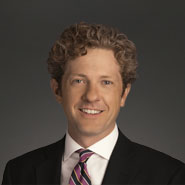Publications

Supreme Court Update: Office of the United States Trustee v. John Q. Hammons Fall 2006, LLC (No. 22-1238)
Greetings, Court Fans!
This morning, the Court announced five decisions, all of which are heavily divided, at least as to the analysis:
- United States v. Rahimi (No. 22-915), an 8-1 decision written by the Chief Justice, holding that the Second Amendment allows the government to prohibit a person who has been found to pose a credible threat to the physical safety of another from possessing a firearm. In doing so, the majority arguably narrowed its decision two terms ago in Bruen, clarifying that the government need not show a “historical twin” for a challenged gun-control measure but instead only needs to point to a “historical analogue.” This prompted no fewer than 5(!) individual-justice concurrences, which mostly try to either amplify or downplay the Court’s departure from Bruen. Meanwhile, Bruen’s author, Justice Thomas, dissented, arguing that a faithful application of Bruen doomed the law in question.
- Smith v. Arizona (No. 22-899), an effectively 7-2 decision holding that when an expert witness testifying at a criminal trial conveys the statements of an absent crime-lab analyst in support of the expert’s opinion, those out-of-court statements are being admitted into the evidence for their truth, so they implicate the Sixth Amendment’s Confrontation Clause.
- Erlinger v. United States (No. 23-370), in which an unusual 6-3 majority of the Chief and Justices Gorsuch, Thomas, Sotomayor, Kagan, and Barrett held that a jury must unanimously find beyond a reasonable doubt that a defendant’s past offenses were committed on separate occasions for purposes of applying the Armed Career Criminal Act’s mandatory minimum sentences.
- Department of State v. Munoz (No. 23-334), a 6-3 decision holding that a U.S. citizen does not have a constitutionally protected liberty interest in their non-U.S. spouse receiving a visa to enter the United States, so the Due Process Clause does not require the State Department to furnish an adequate reason for denying the non-U.S. spouse admission.
- And Texas v. New Mexico and Colorado (No. 141, Orig.), where a 5-4 Court upheld the United States’ objection to a consent decree between Texas and New Mexico over water rights in the Rio Grande, concluding that the decree would impair the United States’ own rights under the 1938 Rio Grande Compact.
That leaves 14 cases yet to be resolved as the Court enters what we expect (but won’t promise) will be the last week of its OT23 term. Given some probable consolidations, we’re guessing those 14 cases will produce 12 decisions. To get through it, the Court has announced it will be issuing more opinions on Wednesday, and we would bet it will also release decisions on Thursday and Friday. Keep an eye on your inboxes next week for some quick descriptions of those decisions when they come down, as well as longer recaps of the cases decided today and yesterday.
To hold you over until then, read on for a full discussion of last Friday’s Office of the United States Trustee v. John Q. Hammons Fall 2006, LLC (No. 22-1238), in which the Court concluded 6-3 that debtors who paid bankruptcy fees that violated the Bankruptcy Clause’s uniformity requirement were not entitled to refunds.
John Q. Hammons Fall 2006 stems from the Court’s unanimous decision two years ago in Siegel v. Fitzgerald (2022), where it held that Congress violated the Bankruptcy Clause’s uniformity requirement by amending the bankruptcy statutes in a way that temporarily resulted in higher fees for bankruptcies filed in some judicial districts. But Siegel didn’t decide what the appropriate remedy for that constitutional violation was, in particular: Should debtors who paid the higher fees get refunds? In John Q. Hammons, a majority of six concluded that the right remedy was for bankruptcy fees to be uniform going forward, with no retrospective relief either in the form of refunds who paid more or surcharges to those who paid less. This prompted a heated dissent from Justices Gorsuch, Thomas, and Barrett, who reasoned that if the fees charged were unconstitutional, how could debtors not get them back?
As those who remember Siegel already know, the federal bankruptcy system is administered by two programs. Most judicial districts (88 out of 94) are administered by the U.S. Trustee Program, which is housed within the Department of Justice. But the six other districts (all in Alabama and North Carolina) are administered by the Bankruptcy Administrator Program, which is part of the Administrative Office of the U.S. Courts. The U.S. Trustee Program is self-funded through user fees paid by debtors, while the Bankruptcy Administrator Program is funded with general appropriations for the Judiciary, with debtors then paying fees which are used to offset that funding. Despite these different funding schemes, from 2001 to 2018, the fees charged by debtors in either program were identical because the Judicial Conference had issued an order requiring the Bankruptcy Administrator districts to charge identical fees to those in effect in U.S. Trustee districts. But that link was temporarily severed in January 2018 when Congress passed a statute increasing the fees charged in U.S. Trustee districts for large debtors. For reasons that aren’t clear, the Bankruptcy Administrator districts failed to increase their fees to match until October 2018. And because the fees charged for a bankruptcy are keyed to the fees in place when a petition is filed, large-debtor bankruptcies filed between January–October 2018 in U.S. Trustee districts continued to pay higher fees than equivalent bankruptcies filed in Bankruptcy Administrator ones until 2021, when Congress enacted another statute mandating that the Bankruptcy Administrator districts increase their fees immediately to match the U.S. Trustee districts.
Debtors in U.S. Trustee districts who paid these higher fees objected to this disparity, filing motions in their bankruptcy proceedings seeking refunds. They pointed to the Constitution’s Bankruptcy Clause, which empowers Congress to establish “uniform laws on the subject of Bankruptcies throughout the United States.” One of those cases eventually reached the Supreme Court, and in 2022’s Siegel decision, the Court unanimously held that the difference in fees was unconstitutional because it ran afoul of the Clause’s uniformity requirement. But Seigel punted on the question of how to remedy that constitutional violation, leaving that for the lower courts to address in the first instance. That issue came to a head in another bankruptcy proceeding—one filed in a U.S. Trustee district by a chain of hotels and resorts—where the Tenth Circuit concluded that the remedy for this constitutional violation was for the debtors to be refunded the difference between the higher fees they actually paid in the U.S. Trustee district and the lower fees they would have paid had they filed in a Bankruptcy Administrator district. The Court granted certiorari to address this remedial question unresolved by Siegel.
A majority of six reversed the Tenth Circuit in a short opinion written by Justice Jackson. She started by highlighting three features of Siegel that bore directly on the remedy question: First, and most important, the constitutional violation found in Siegel was not that the fees charged in U.S. Trustee districts were unconstitutionally high. Rather, it was that the fees weren’t uniform nationwide. That non-uniformity could be fixed by reducing U.S. Trustee district fees to the Bankruptcy Administrator district ones. But it could be equally fixed by increasing Bankruptcy Administrator fees to the U.S. Trustee district rates. As a constitutional matter, the uniformity clause was ambivalent between these options: All it cared about was that the fees be the same. Second, the disparity was short lived: By the time, Siegel was decided, Congress had already fixed it. And third, it was small: Few large-debtor bankruptcies were filed between January–October 2018 in the six Bankruptcy Administrator districts, so only about fifty cases benefited from those districts’ temporarily lower fees.
In light of those points, Justice Jackson concluded that the “touchstone” for deciding the appropriate remedy for fixing an unconstitutional statute is “what the legislature would have willed had it been apprised of the constitutional infirmity.” Deciding what Congress would have wanted was pretty easy here because Congress itself “fixed” the constitutional violation before Seigel was even decided. And its chosen remedy was not to reduce U.S. Trustee district fees or to give refunds; instead, it mandated that the Bankruptcy Administrator districts raise their fees to match the higher fees charged in U.S. Trustee districts. Going against Congress’s chosen remedy by giving refunds was at odds with congressional intent because it would impede Congress’s purpose of making the U.S Trustee program self-funding: Issuing refunds to every U.S. Trustee filer who paid the higher fees would cost something like $200M, a bill that taxpayers (not bankruptcy filers) would ultimately have to foot. That $200M refund would be even more anomalous when set against the paltry number of debtors in Bankruptcy Administrator districts who benefited from the temporarily lower fees. Given these dynamics, Jackson concluded that the only real question was whether the right remedy was to impose a retroactive surcharge on the roughly fifty Bankruptcy Administrator filers who paid too little. But here too, the Court followed Congress’s apparent conclusion that it would be too administratively complicated to reopen those now-resolved proceedings to recover additional fees. The only remedy left, then, was the prospective parity Congress mandated in 2021.
Justice Jackson then responded to several counterarguments from Justice Gorsuch’s lengthy dissent. Two of those were the most important: First, as discussed below, Gorsuch argued that congressional intent was irrelevant; what mattered is whether the relief a plaintiff asked for was consistent with remedial principles. But for the majority, the problem with that approach is that the Constitution says nothing about the appropriate remedy for constitutional violations, so rather than Courts creating remedies out of whole cloth, they should defer to the Legislature’s judgment. Second, Gorsuch (as well as the debtors) argued that denying a refund would violate due process, which requires “meaningful backward-looking relief.” But the cases Gorsuch and the debtors cited involved unconstitutional taxes for which there was no remedy available other than to pay the tax under protest and seek a refund later. The majority concluded that those cases bore little resemblance to the situation here, so due process did not mandate a similar remedy.
Justice Gorsuch, joined by Justices Barrett and Thomas, dissented, in an opinion significantly longer than Justice Jackson’s majority one. But while it’s long (and interesting!), it ultimately rests on a rather straightforward methodological disagreement with the majority: Should we care what remedy Congress would prefer? In the dissenters’ view, the answer was no: In an employment discrimination case where the employer is found to have illegally discriminated against an employee, no one would ask the employer what remedy they would propose. So why should you ask the government what remedy it wants to give to those who paid higher fees due to an unconstitutional law? What matters is whether the plaintiff’s proposed remedy comports with traditional remedial principles. Here it does, because the ordinary remedy for any overpayment of tax pursuant to an unconstitutional tax scheme is a refund. And while the majority pointed to decisions calling legislative intent the touchstone for remedying constitutional violations, those precedents involved questions of severability—that is, could an unconstitutional provision be severed from an otherwise valid law—not curing harms suffered by the victims of an unconstitutional taxing scheme. Because traditional equitable principles supported the debtors’ requested relief of a refund, Gorsuch would have affirmed the Tenth Circuit.

